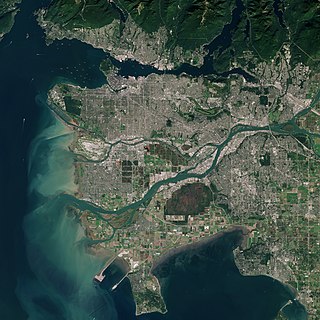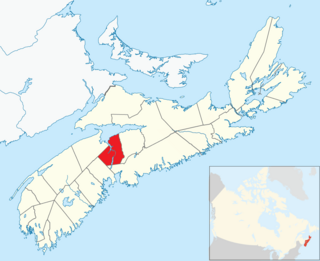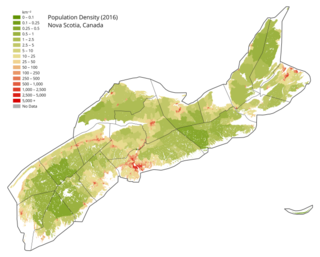Related Research Articles

The Metro Vancouver Regional District (MVRD), or simply Metro Vancouver, is a Canadian political subdivision and corporate entity representing the metropolitan area of Greater Vancouver, designated by provincial legislation as one of the 28 regional districts in British Columbia. The organization was known as the Regional District of Fraser–Burrard for nearly one year upon incorporating in 1967, and as the Greater Vancouver Regional District (GVRD) from 1968 to 2017.
Overall, there is a low rate of crime in Canada. Under the Canadian constitution, the power to establish criminal law and rules of investigation is vested in the federal Parliament. The provinces share responsibility for law enforcement, and while the power to prosecute criminal offences is assigned to the federal government, responsibility for prosecutions is delegated to the provinces for most types of criminal offences. Laws and sentencing guidelines are uniform throughout the country, but provinces vary in their level of enforcement.
Listed here are the ethnic groups of Canadian residents as self-identified in the 2016 census in which approximately 35,151,000 census forms were completed). The relevant census question asked for "the ethnic or cultural origins" of the respondent's ancestors and not the respondents themselves.

Wainfleet is a rural township in southern Niagara Region, Ontario, Canada.

Italian Canadians comprise Canadians who have full or partial Italian heritage and Italians who migrated from Italy or reside in Canada. According to the 2016 Census of Canada, 1,587,970 Canadians claimed full or partial Italian ancestry. The census enumerates the entire Canadian population, which consists of Canadian citizens, landed immigrants and non-permanent residents and their families living with them in Canada. Residing mainly in central urban industrial metropolitan areas, Italian Canadians are the seventh largest self-identified ethnic group in Canada behind French, English, Irish, Scottish, German and Chinese Canadians.

West Hants, officially named the West Hants Regional Municipality, is a regional municipality in Hants County, Nova Scotia, Canada.

The Edmonton Metropolitan Region (EMR), also commonly referred to as the Alberta Capital Region, Greater Edmonton or Metro Edmonton, is a conglomeration of municipalities centred on Alberta's provincial capital of Edmonton.
Statistics Canada conducts a national census of population and census of agriculture every five years and releases the data with a two-year lag.

Rock Harbour is a local service district and designated place in the Canadian province of Newfoundland and Labrador. It is east of Marystown on Placentia Bay.

Ontario, one of the 13 provinces and territories of Canada, is located in east-central Canada. It is Canada's most populous province by a large margin, accounting for nearly 40 per cent of all Canadians, and is the second-largest province in total area. Ontario is fourth-largest in total area when the territories of the Northwest Territories and Nunavut are included. It is home to the nation's capital city, Ottawa, and the nation's most populous city, Toronto.

Nova Scotia is a Canadian province located on Canada's southeastern coast. It is the most populous province in the Atlantic Canada, and its capital, Halifax, is a major economic centre of the region. Nova Scotia is the second smallest province in Canada, with an area of 55,284 km2. As of 2016, it has a population of 923,598 making it the second most densely populated province of the country.
A designated place (DPL) is a type of community or settlement identified by Statistics Canada that does not meet the criteria used to define municipalities or population centres. DPLs are delineated every 5 years for the Canadian census as the statistical counterparts of incorporated places such as cities, towns, and villages.

Petite Forte is a local service district and designated place in the Canadian province of Newfoundland and Labrador. It is on Placentia Bay and is connected by road via Route 215. Petite Forte is located on the Burin Peninsula which is on the southeast coast of the island of Newfoundland in the province of Newfoundland and Labrador. It fought attempts by the government in the 1960s to resettle. Petite Forte has a population of 26 according to the 2021 census.

In 2011, the population of the city of Ottawa was 883,391, an 8.8% increase from 2006. The population of the census metropolitan area was 1,215,735.

Great Codroy is a local service district and designated place in the Canadian province of Newfoundland and Labrador. In 2016, it had a population of 69.
The demographics of Winnipeg reveal the city to be a typically Canadian one: multicultural and multilingual. Winnipeg is also prominent in the size and ratio of its First Nations population, which plays an important part in the city's makeup. About 11% of Winnipeggers are of First Nations descent, which vastly exceeds the national average of 4.3%.
The 1871 Canadian census marked the first regularly scheduled collection of national statistics of the Canadian population on April 2, 1871, as required by section 8 of the British North America Act. The constitution required a census to be taken in 1871 and every tenth year thereafter. Parliament implemented the requirements of the constitution through the Census Act of May 12, 1870. In the first census, the population of Canada was enumerated to be 3,485,761.

The 2021 Canadian census was a detailed enumeration of the Canadian population with a reference date of May 11, 2021. It follows the 2016 Canadian census, which recorded a population of 35,151,728. The overall response rate was 98%, which is slightly lower than the response rate for the 2016 census. It recorded a population of 36,991,981, a 5.2% increase from 2016.
References
- ↑ Canada, Government of Canada, Statistics (2016-02-29). "2016 Census of Agriculture". www.statcan.gc.ca. Retrieved 2016-12-01.
- ↑ Branch, Legislative Services. "R.S.C., 1985 c. S-19, Statistics Act". laws-lois.justice.gc.ca. Retrieved 2018-03-27.
- ↑ Branch, Legislative Services. "R.S.C., 1985, c. S-19, s. 23 (2); 2017". laws-lois.justice.gc.ca. Retrieved 2018-03-27.
- 1 2 3 4 5 Canada, Government of Canada, Statistics (2016-07-14). "Taking an agriculture census". www.statcan.gc.ca. Retrieved 2018-03-26.
- ↑ "Agriculture–Population Linkage Data: About Agriculture–Population linkage". www.statcan.gc.ca. Retrieved 2016-12-02.
- ↑ Canada, Government of Canada, Statistics (2017-05-10). "A Portrait of Canadian Farms". www.statcan.gc.ca. Retrieved 2018-03-26.
- ↑ "2016 Census on Agriculture About to Get Underway". The Real Dirt on Farming Blog. 2016-05-02. Retrieved 2016-12-02.
- ↑ Canada, Government of Canada, Statistics (2015-03-25). "Census of Agriculture". www23.statcan.gc.ca. Retrieved 2016-12-02.
- ↑ Canada, Government of Canada, Statistics (2016-07-14). "Census of Agriculture products and services". www.statcan.gc.ca. Retrieved 2018-03-26.
- ↑ Kerr, Jeremy T.; Cihlar, Josef (2003-03-01). "Land use and cover with intensity of agriculture for Canada from satellite and census data". Global Ecology and Biogeography. 12 (2): 161–172. doi:10.1046/j.1466-822X.2003.00017.x. ISSN 1466-8238.
- ↑ Swanson, Darren; Hiley, Jim; Venema, Henry; Grosshans, Richard (August 2009). Indicators of Adaptive Capacity to Climate Change for Agriculture in the Prairie Region of Canada: An Analysis based on Statistics Canada's Census of Agriculture (Report). International Institute for Sustainable Development. Retrieved 26 March 2018.